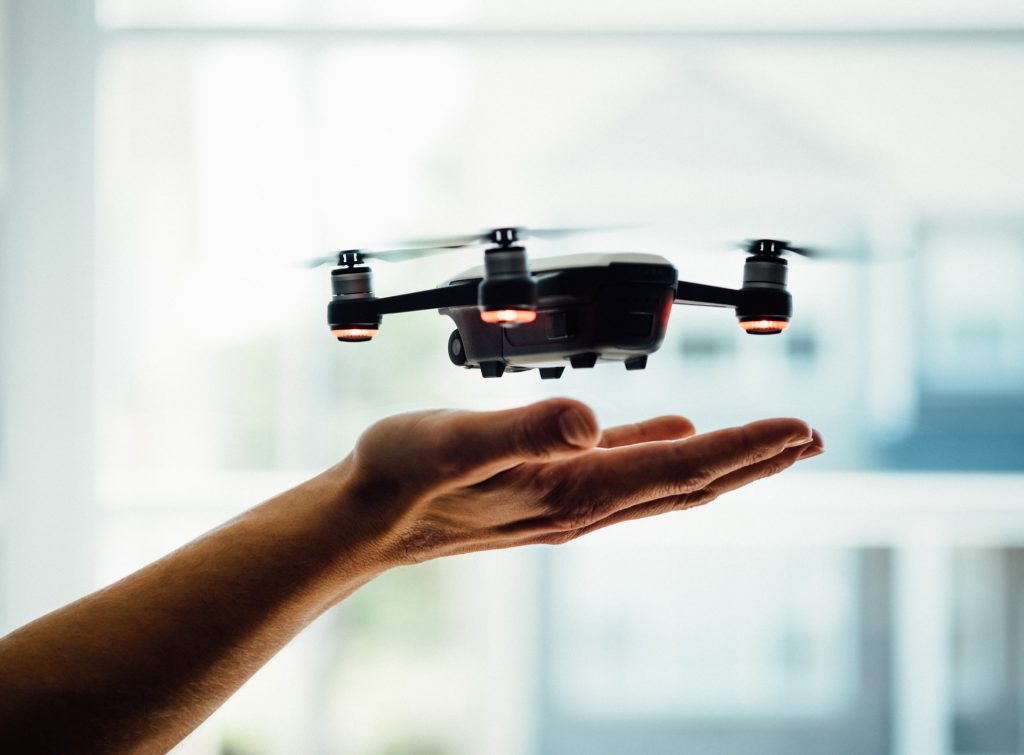The COVID-19 pandemic has disrupted the work and lifestyles of people in a way we never could have predicted. Government has enforced strict lockdowns to curb the spread, working from home is the new reality for many businesses, and schools and universities are closed and many students have returned home. Social distancing, constant hand-washing and face masks are the new normal during your weekly food shop, and E-commerce companies have made changes to deliveries to their customers.
Shops, pubs and restaurants have a mammoth challenge on their hands when it comes to how they serve customers going forward. Airlines need to rethink how they safely transport passengers and real estate agents need to find new ways to sell homes.
In this new reality, technology offers solutions to overcome some of the challenges thrown up by the pandemic. This top 10 shares some practical solutions that can be implemented right now and some future strategy ideas and innovation.
1. Digital communications
The pandemic has forced the majority of us to work from home and rely on tools like Zoom, Google hangouts & Skype.
Businesses have also had to be creative in how they carry on communicating with their customers. The most popular ways seem to be live chat, increased social media, AI driven chatbots and video calling. The latter is being used for services like consultations, home viewings and doctors appointments.
We don’t believe this is all just going to disappear once the pandemic is over. Employees have become accustomed to remote-working and consumers are way more comfortable dealing with brands digitally than ever before.
2. Multi-experience
Put really simply, multi-experience is engaging with your audience across multiple platforms or touch points, for example your app, website, wearables and immersive tech (like augmented and virtual reality) and conversational tools like chat or even face to face, all whilst keeping a consistent user experience.
It’s about adapting to the increasing market of different devices and their respective experiences.
A good example of how this works is banking. We can use mobile, in person, chatbots, in app, websites, pretty much however we please to access our information and make payments. This is just one example of where the financial sector is evolving—and where multi experience is becoming more and more important.
3. Chatbots

Chatbots have been around a little while but become became increasingly popular during lockdown. People are more comfortable talking to AI now.
With over 3 billion messaging app users worldwide, this method of communication is now more widely used than social media. People want to communicate with their friends and family as well as their finances, insurance company and to shop, etc.
Chatbots come in all shapes and sizes; from simple question-based bots through to bots that understand and learn from the conversations they have. They can support your brand experience at every stage of their customer journey.
From product selection to promoting discount through to helping with renewals, customer support and concierge queries, they offer businesses a true opportunity to lower costs whilst improving satisfaction.
63% of people prefer to message a chat bot vs. talk with a human when communicating with a business. (Source: G2 Crowd)
4. Shared digital experience
The Virgin Money London Marathon, which should have taken place on Sunday 26 April 2020, is the world’s biggest one-day fundraising event in the UK. In 2019, it collected more than £66.4 million for hundreds of charities. Because of the coronavirus pandemic, the marathon, along with many other events couldn’t take place and charities have had to get creative with virtual fitness challenges and marathons.
Let’s take the 2.6 challenge. The idea is donors do 2.6 of something and share it virtually—a 2.6 mile run, 26 press ups, a 2.6 minute plank etc, all raising money for their charity. So far, the campaign has raised over £10 million.
And it’s not just charity events—award ceremonies, tech conferences, festivals, sporting events like the Olympics and the football with Euro 2020 and concerts have all been cancelled, postponed or tweaked. Singers and bands like Chris Martin from Coldplay and John Legend performed virtual gigs through Instagram live.
5. Voice
What we’ve seen emerging over the last couple of years is touchscreens in places like McDonald’s and at tube stations to get your tickets, and we wonder how people are going to feel about using touchscreens after the spread of coronavirus. This is an opportunity for organisations to take another look at voice tech.
Sometimes voice can be tricky in public places, but nowadays all smartphones and most headphones have voice assistants embedded, and consumers can talk to them to control external devices (like an ordering system).
People used to be quite self-conscious about using voice in public, but with Whatsapp voice notes and Siri, that’s almost entirely dissipated—especially for Gen Z and Millenials. Gen Z is growing up in an age of tech disruption and voice is a tech that they use to make life easier: They shout at Alexa to snooze their alarm, use voice to set timers, talk to Google assistant to find out the weather and search for products and services.
6. Autonomous commerce

Countries like India and China used drones to monitor and spray disinfectants in public areas. I believe there will be a broader acceptance for automotive delivery drones and driverless fleets in the future. Once these autonomous and contact-free technologies start gaining high acceptance among consumers, there is a greater chance of self-driving cars and semi-autonomous technologies succeeding.
Drone deliveries don’t have to be exclusively for the obvious like Amazon deliveries or takeaways. They could be used to deliver medication or supplies to those in remote areas.
In the future, those random Amazon purchases may not be as random as you think. Amazon are currently trialing new predictive methods for speeding up home deliveries. Their vans are loaded the night before with items their data tells them that customers will buy.
7. Internet of things (IOT)
IOT or smart home as it’s otherwise known, essentially allows individuals to control their entire home from one place. Either by a physical control panel or using voice commands through a smart speaker.
With the home now becoming an extension to most peoples workplaces (and it looks like for the long haul with Twitter recently announcing all employees could now work from home when they like), is your organisation able to support them as well as showcase your product or service where they need it?
For example, the ability to create a shopping list and make an order through Ocado’s skill, or booking an appointment whilst cooking dinner through Alexa.
8. Progressive web apps (PWA)
PWA’s look like normal websites on desktop but look, feel and act more like apps on a smartphone. This has many advantages, including faster loading for customers and lower development costs for businesses.
Pinterest rebuilt their mobile web experience as a PWA. It took them 3 months to build and it resulted in time spent on the mobile site going up by 40%. User-generated ad revenue went up by 44% and core engagements up by 60%. Even better, page load speed was reduced from 23s to 5.6s.
Forbes redesigned their mobile website as a PWA which resulted in load-time reducing from 12 seconds to now 0.8 seconds. Users now spend more time on the site as a result (43% increase), more ad views (20% increase) and more content engagement from readers (increase of 100%).
AliExpress, a major player in the eCommerce world wanted to bring the best parts of their app to the web with hopes of converting non-app users to native app users. The result was a cross-platform PWA that showed a 104% increase in new users across all browsers, 82% increase in new iOS users, 2X more pages visited per session per users across.
9. Deepfakes
The average person will take around 25,000 selfies in their lifetime. Faking tech however needs just 100 photos or a couple of minutes of video to create an accurate likeness of you. This type of fakery was used during both the most recent presidential election and the Brexit campaign.
We believe deepfakes could increase public mistrust of photos, video and social media. But it could also lead to new experiences, such as alternative programme endings being created in real time, based on how viewers react to what’s happening on-screen.
10. Sentiment analysis
Natural language processing used by the likes of Siri, Alexa, and Google Home can understand what you say but what about how you feel? Imagine if your Alexa microwave could tell how you’re feeling when making popcorn?
Suddenly, businesses know much more about the relationship you have with a product in addition to when and how you bought it. Beyond selling you more stuff, we believe brands with purpose could use sentiment analysis to develop a deeper bond with customers.

Conclusion
We appreciate there is a lot to think about but our advice would be that you need to at least start. Take one element and strategise how this can apply to your industry or business.
Key takeaways
- Be ready for the future of digital and the new demands of consumers
- Explore new technology. How can this enhance your user experience and commitment to the brand?
- Be in a state of readiness. Whilst another global pandemic is unlikely, being able to face anything puts you in a competitive position
- Instill a culture of flexibility in your organisation.
— Gemma Bianchi
